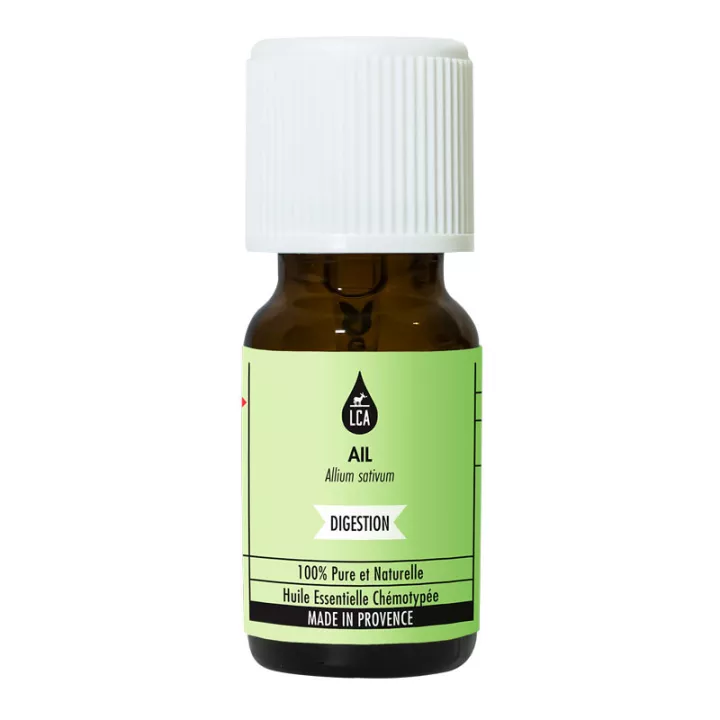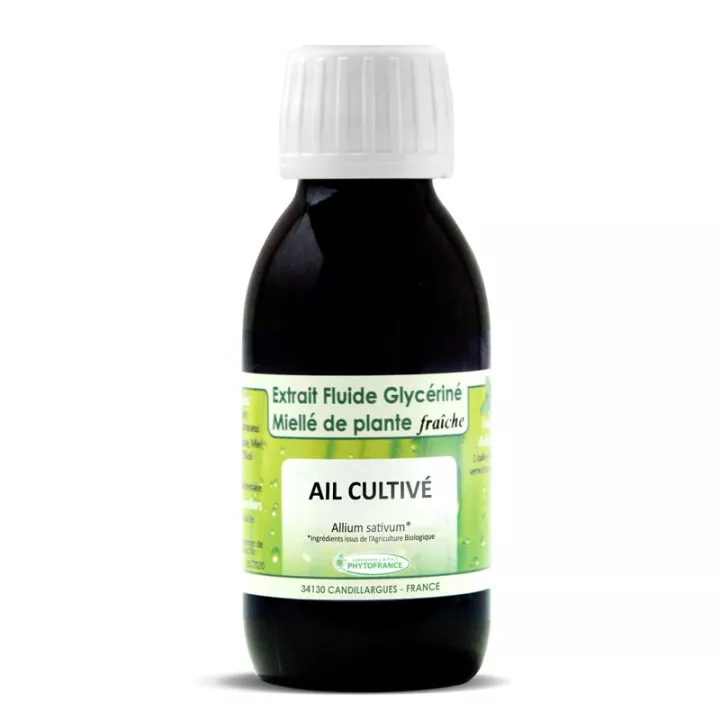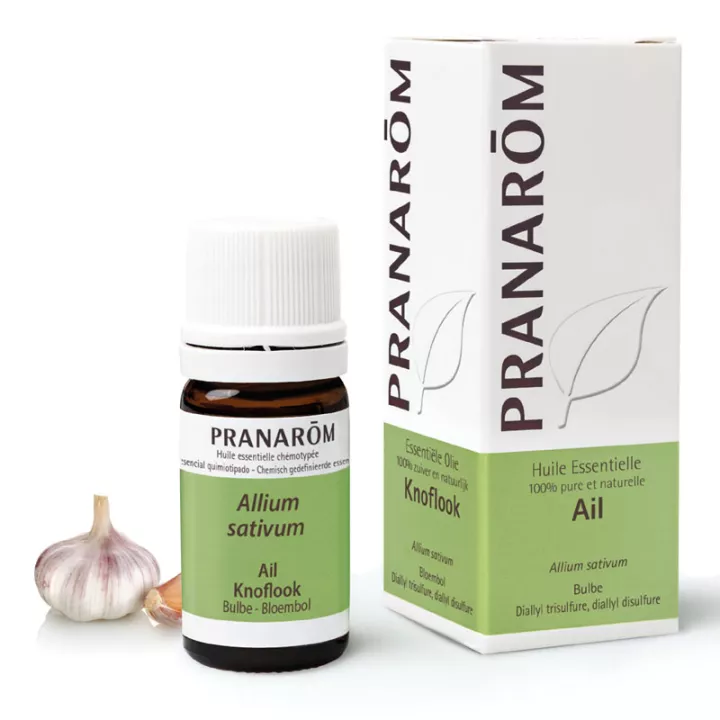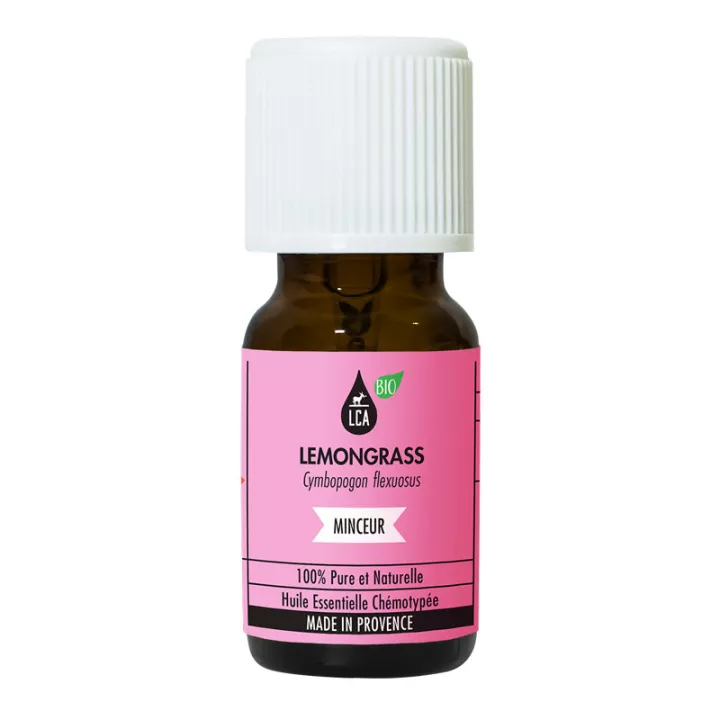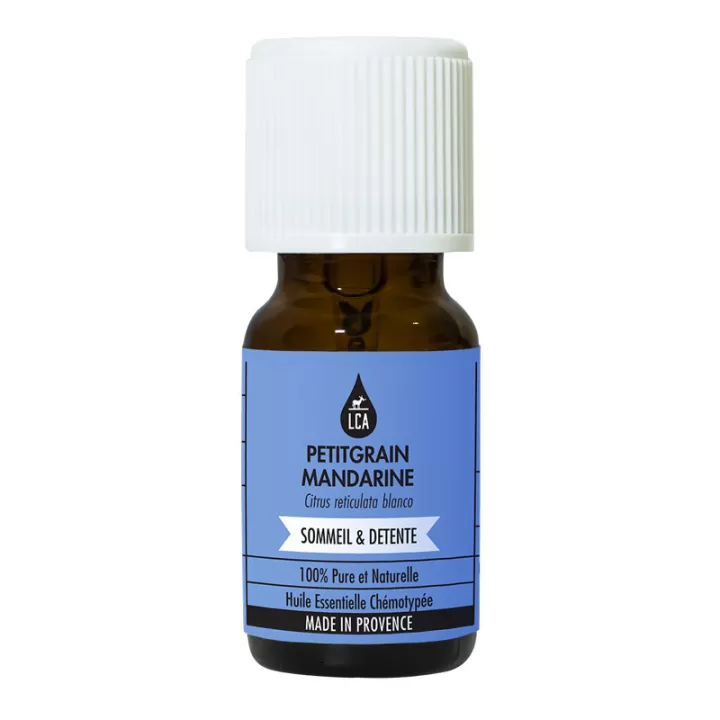What is LCA Garlic essential oil used for?
LCA Garlic Essential Oil has multiple properties:
- Powerful antioxidant
- Vermifuge
- Anti-infectious / Anti-bacterial
- Hypotensive
- Aperitive
- Anticholesterolemic
- Hormon-like: glandular rebalancer
Garlic essential oil may be indicated in cases of:
- Respiratory infections
- Intestinal worms and parasites: roundworms, pinworms, taenia
- Prevention of cardiovascular disorders: atherosclerosis, hypertension, cholesterol, thrombosis
- Prevention of infectious diseases: flu epidemics, etc.
- Urinary infections: cystitis, urethritis...
- ENT infections: Bronchitis, whooping cough, colds
- Internal, external and nosocomial fungal infections
- Warts, corns
LCA aromatherapy laboratory also offersDill essential oil at the best price in our online pharmacy.
Composition and Mechanisms of Action
Garlic essential oil is rich in various bioactive compounds, including alliicin, diallyl sulfide, ajoene and other organosulfur compounds. These compounds give garlic its unique medicinal properties. For example, ajoene has an anti-thrombotic effect by reducing the viscosity of the platelet lipid bilayer and inhibiting the formation of thromboxane A2. Garlic also contains phenolic acids and flavonoids, which contribute to its antiseptic properties.
Anti-infectious properties
Garlic essential oil is recognized for its powerful anti-infectious properties. It has bactericidal, fungicidal (anti-candidosis) and intestinal anti-parasitic (anthelmintic) activities. Studies have demonstrated its efficacy against various pathogenic micro-organisms, notably Campylobacter jejuni, responsible for certain gastrointestinal infections.
Cardiovascular properties
Garlic also has beneficial properties for the cardiovascular system. It acts as an anti-hypertensive by dilating capillary arterioles, helping to lower blood pressure. In addition, garlic has platelet anti-aggregating activity, preventing the formation of blood clots and reducing the risk of heart attack.
Metabolic properties
Garlic essential oil has positive metabolic effects. It is known for its anticholesterolemic action, reducing blood lipid levels. It also has an anti-diabetic effect, lowering blood sugar and improving the lipid profile. Garlic is also anti-hepatotoxic, protecting the liver from damage induced by various toxic agents.
Anticancer properties
Studies suggest that garlic may play a role in cancer prevention and treatment. It exhibits anticancer activities by inhibiting tumor cell growth and inducing apoptosis in certain types of cancer, such as stomach and esophageal cancer.
Other properties
In addition to its main properties, garlic essential oil has other health benefits. It acts as a digestive tonic, stimulating appetite and relieving digestive spasms. In addition, it is effective against warts, corns and calluses when applied locally. Recent studies also suggest the anti-coronavirus potential of garlic's organosulfur compound.
Directions for use and dosage
- Cutaneous use: Although it offers many benefits, the use of garlic essential oil is limited by its allicin concentration. Professional consultation is recommended for appropriate use. For cutaneous use, garlic is generally not recommended due to its dermocaustic potential. If used, it should be strongly diluted (1 or 2 drops in vegetable oil).
- Oral consumption: Ingestion of garlic, particularly in essential oil form, should be carried out under medical supervision to avoid irritation of mucous membranes. Despite its advantages, the use of garlic essential oil in cooking is limited by its pronounced odor, preferring fresh garlic.
- Inhalation for respiratory infections: For inhalation, dilute a few drops of garlic essential oil in warm water, cover the head with a towel and inhale the vapors for about 10 minutes, up to three times a day. The oil can also be applied to a handkerchief for direct inhalation.
- Diffusion: Due to its strong, persistent odour, garlic essential oil is not recommended for atmospheric diffusion.
Give your opinion on the advice for use and dosage of LCA Huile essentielle d'Ail with our partner Verified opinions after your purchase.
Composition
Main chemical compounds: blown compounds, Diallyl disulfide (38%), Diallyl trisulfide (30%)
Other chemical compounds: methyl allyl trisulfides (7 to 8%), diallyl sulfide (6 to 7%), diallyl tetrasulfide (4%) methyl allyl disulfide (3%).
- Botanical name: Allium sativum
- Plant part extracted: Bulb
- Production method: Complete steam distillation
Precautions for use
The scent of this essential oil is extremely strong, so it is rarely used. External use is not recommended, as it is highly dermocaustic.
- Dermocaustic essential oil: external use strongly discouraged without the supervision of an aromatherapist.
- Internal use reserved for therapists.
- Do not use during pregnancy, while breast-feeding or on children.
- Do not use as a vapour.
- If you're worried about bad breath, finish your meal with a piece of parsley (fresh or essential oil), a raw bean or a few aniseed or coffee beans.
- To preserve your essential oil without contaminating the environment with its odor, we recommend storing it in its original glass bottle, in an airtight plastic bag, or in a well-stuffed jar containing an anti-odor refrigerator ball (with activated charcoal).
- Certain natural compounds contained in this essential oil may present a risk of allergy for certain sensitive individuals when incorporated into a cosmetic composition (according to the 7th Amendment of the European Directive on cosmetic products (2003/15/EC)): limonene and linalool.
- As a general rule, always test-apply your preparation in the crease of the elbow at least 48 hours before use.
Presentation of LCA Garlic Essential Oil
LCA Garlic Essential Oil comes in a 10 ml bottle.

